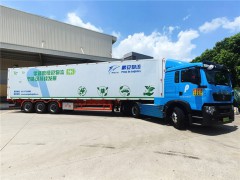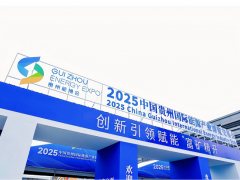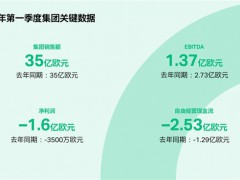據1月13日Offshore Energy報道,挪威石油管理局(NPD)預計,未來幾年將繼續保持穩定總干事英格麗德·瑟爾貝格(Ingrid S?lvberg)表示,未來幾年,許多新發現以及幾個新油田開發,意味著產量有望在2024年之前有所增加。
根據NPD數據,挪威2021年石油產量為1.02億立方米(6.42億桶),天然氣產量為1130億立方米,這相當于每天大約有400萬桶,較前一年略有增加。
2021年有5個油田開始生產,分別是Duva、Yme(一個已重啟的老油田)、Solveig、北海Martin Linge和挪威海北部?rfugl。此外,北海Johan Sverdrup油田第一階段已全面投產,第二階段計劃于今年啟動。一旦實現全面生產,Johan Sverdrup將占挪威大陸架石油產量的35%。
NPD表示,2021年已經提交了8八個發展計劃(PDO),其他油田也在籌備之中,預計今年兩家公司將提交數十份計劃。石油稅臨時變化很可能導致了項目活動增加。即使沒有稅收政策,這些項目也很有可能得以實施,但其中一些項目可能會被推遲。
油氣投資
2021年,挪威大陸架油田和新發現的開發投資總額約為1500億挪威克朗(約合172億美元),這一數字略低于前一年。NPD預測,2022年將進一步減少,而在2025年之前,投資會再次增加。
這些投資有助于到2030年繼續保持高利潤生產,而目前計劃顯示,到2030年,產量將會下降,這種下降程度和速度將取決于這些公司在未來幾年能發現多少額外油氣資源。
雖然產量仍然很高,但二氧化碳排放量正在下降,這背后最重要的原因是使用了電力,旨在到2030年將排放量在2005年的水平上減少一半。
新的油氣發現
NPD數據顯示,2021年共完成了40口勘探井(31口探井和9口評價井)。探井發現了18處油氣資源。此外,在具有勘探目標的生產井中又獲得了兩處發現。
2021年資源增長達到8100萬立方米 (5.1億桶)。過去幾年,資源增長穩定,2021年是自2014年以來增長最快的一年。
瑟爾貝格表示,NPD預計今年將鉆30至40口探井。
2021年,新勘探區域獲得了該領域內的年度獎勵和第25輪許可。在該輪融資中,共有30家公司獲得了61個生產許可證,7家公司在第25輪融資中獲得了所有權權益。在2021年也有大量的申請,這項獎項將在幾周內進行。
新產業的興起
新參與者和行業正在挪威大陸架上出現。Hywind Tampen技術試點項目是世界上第一個從海上風能為石油設施提供電力的項目。該計劃要求今年在北海安裝渦輪機。
海底礦物開采也可能成為一種新產業。2021年秋季,NPD進行了考察,并在這一年中與挪威大學一起參加了其他幾次考察。4年數據采集初步結果表明,在挪威大陸架上存在著有趣的錳結殼和硫化物。
NPD之前已經繪制了挪威大陸架上二氧化碳儲存圖,估計有800億噸的二氧化碳儲存空間,相當于挪威目前水平上1500年的排放量。
NPD發現,無論是現有的還是新的參與者,都對二氧化碳存儲機會越來越有興趣。在2021年公布兩個地區后,當局收到了5家企業申請。
王佳晶 摘譯自 Offshore Energy
原文如下:
Norway nets record-breaking revenues from oil & gas
The Norwegian Petroleum Directorate (NPD) expects stable, high production to continue over the next few years. Many new discoveries, as well as several new field developments in upcoming years, mean that production is expected to increase somewhat leading up to 2024, says Director general Ingrid S?lvberg.
According to the NPD, Norway’s production in 2021 came to 102 million standard cubic metres of oil (642 million barrels) and 113 billion standard cubic metres of gas. This corresponds to about four million barrels of oil equivalent per day, a minor increase from the previous year.
Five fields started production last year: Duva, Yme (an older field which was restarted), Solveig, Martin Linge in the North Sea, and ?rfugl in the northern Norwegian Sea.
Furthermore, Phase 1 of the Johan Sverdrup field in the North Sea is in full operation, and Phase 2 is scheduled to start up this year. once full production is achieved, Johan Sverdrup will account for 35 per cent of oil production on the Norwegian shelf.
The directorate said that additional fields are in the pipeline as eight development plans (PDOs) were submitted in 2021, and the companies are expected to submit dozens of PDOs this year.
The directorate believes that the temporary change in the petroleum tax has most likely led to an increase in project activity. The projects would most likely have been carried out even without the tax package, but some of them would have been postponed, the NPD said.
Oil & gas investments
A total of about NOK 150 billion or about $17.2 billion was invested in fields and the development of discoveries on the Norwegian shelf in 2021, which is somewhat lower than the previous year. The NPD’s forecasts show an additional reduction in investments in 2022 before they are expected to increase again leading up to 2025.
The investments contribute to continued high and profitable production towards 2030, at which point the current plans show that production will decline. The extent and speed of this decline will depend, among other things, on how much additional oil and gas the companies will discover in the years to come.
While production remains high, CO2 emissions are dropping and the most important reason behind this is the use of power from shore. The objective is to cut emissions in half by 2030 compared with the level in 2005.
New oil & gas discoveries
The NPD’s data show that 40 exploration wells were completed last year (31 wildcat wells and 9 appraisal wells). Wildcat wells yielded 18 oil and gas discoveries. Two additional discoveries were made in production wells with exploration targets.
Resource growth in 2021 amounted to 81 million standard cubic meters of oil equivalent (510 million barrels of oil equivalents). There has been a steady resource growth over the past years, and 2021 had the highest growth since 2014.
The NPD expects 30-40 exploration wells to be drilled this year, S?lvberg says.
Last year saw the award of new exploration acreage in the annual Awards in Pre-defined Areas (APA) as well as in the 25th licensing round. 30 companies were offered a total of 61 production licenses in the APA round, and seven companies offered ownership interests in the 25th round. There was also significant interest and a large number of applications in the APA round in 2021, and this award will take place in a few weeks.
New industries emerging
New players and industries are emerging on the Norwegian shelf. The technology pilot Hywind Tampen is the world’s first project to supply power to petroleum installations from offshore wind. The plan calls for the turbines to be installed in the North Sea this year.
Seabed mineral extraction could also become a new industry. In autumn 2021, the NPD carried out its own expedition and participated in several other expeditions with Norwegian universities over the course of the year. Preliminary results from four years of data acquisition show that there are interesting occurrences of manganese crusts and sulphides on the Norwegian shelf.
The NPD has previously mapped opportunities for CO2 storage on the Norwegian shelf and its estimates show that there is room to store 80 billion tonnes of CO2 – the equivalent of 1,500 years of Norwegian emissions at the current level.
The directorate is seeing increasing interest from both established and new players looking for CO2 injection acreage. The authorities received applications from five companies following the announcement of two areas in 2021.
免責聲明:本網轉載自其它媒體的文章,目的在于弘揚石化精神,傳遞更多石化信息,并不代表本網贊同其觀點和對其真實性負責,在此我們謹向原作者和原媒體致以敬意。如果您認為本站文章侵犯了您的版權,請與我們聯系,我們將第一時間刪除。







